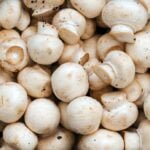How does the biological efficiency of sawdust and soy hull affect oyster mushroom growth
Maximizing Oyster Mushroom Growth: The Impact of Biological Efficiency in Sawdust and Soy Hull Substrates
Introduction (approx. 200 words):
Growing oyster mushrooms (Pleurotus spp.) requires careful consideration of the substrate used. The biological efficiency of the substrate, specifically sawdust and soy hull commonly referred to as Master’s Mix, plays a crucial role in the growth and yield of these mushrooms. In this article, we will explore the relationship between biological efficiency, sawdust, soy hull, oyster mushroom growth, and the nitrogen content of the substrate.
Biological Efficiency & Its Impact (approx. 300 words):
Biological efficiency refers to the conversion of substrate into edible mushroom biomass. It is an essential indicator of the substrate’s ability to support mushroom growth and yield. In simpler terms, it measures how efficiently the substrate can be transformed into a harvestable crop of mushrooms. Higher biological efficiency is generally desirable as it signifies the substrate’s effectiveness.
When considering sawdust and soy hull as the substrate, the biological efficiency can significantly influence oyster mushroom growth. Various studies have demonstrated that higher biological efficiency often leads to better yields. This means that substrates that can efficiently convert nutrients into mushroom biomass will result in a larger and healthier mushroom harvest. However, it is important to acknowledge that other factors, such as the substrate’s nitrogen content and overall growing conditions, can also impact biological efficiency.
The Role of Nitrogen Content (approx. 400 words):
Nitrogen content plays a critical role in determining the biological efficiency of the substrate. Nitrogen is an essential nutrient for mushroom growth, as it promotes mycelial development, hyphal branching, and fruiting body formation. Substrates with optimal nitrogen content can offer improved biological efficiency, leading to higher yields.
In one study, a positive correlation was observed between yield, nitrogen content, and biological efficiency. This suggests that higher nitrogen content in the substrate can enhance the biological efficiency and subsequently improve oyster mushroom production. The nitrogen content determines how well the mushrooms can access and utilize the nutrients present in the substrate. However, it is important to strike the right balance, as excessively high nitrogen levels can lead to complications like bacterial contamination.
Sawdust’s Impact on Biological Efficiency (approx. 500 words):
Sawdust is a common component of oyster mushroom substrates due to its availability, low cost, and desirable physical characteristics. However, sawdust generally has a wide Carbon: Nitrogen (C:N) ratio, which can affect biological efficiency.
The wide C:N ratio in sawdust limits the nitrogen available for mushroom growth, leading to reduced biological efficiency. Oyster mushrooms prefer substrates with a narrower C:N ratio to ensure adequate nitrogen availability. Therefore, using sawdust as the sole substrate may not provide optimal conditions for oyster mushroom growth. When the C:N ratio is unbalanced, the mushrooms struggle to obtain the necessary nutrients, resulting in slower growth and lower yields.
To overcome this limitation, sawdust can be supplemented with nitrogen-rich supplements like soy hull or other nitrogen sources. By incorporating soy hull into the substrate mix, the C:N ratio can be narrowed, enhancing the biological efficiency of the substrate. The soy hull brings additional nitrogen to the system, ensuring the mushrooms have sufficient nutrients for growth. This supplementation helps create an environment that supports optimal mushroom development and maximizes the use of available resources.
Finding the Optimal Balance (approx. 500 words):
To maximize oyster mushroom growth, it is crucial to find the optimal balance between sawdust, soy hull, and other factors that impact biological efficiency. Here are some key recommendations:
1. Adjusting the ratio: Experiment with different ratios of sawdust to soy hull to find the optimal balance based on availability and cost. Aim for a narrower C:N ratio to promote efficient nutrient utilization by the mushrooms. Finding the right balance will help create an environment that optimizes growth and ensures the mushrooms have access to the necessary nutrients.
2. Nitrogen supplementation: Monitor the nitrogen content in the substrate and consider additional nitrogen supplementation if needed. Other nitrogen sources, such as organic fertilizers or poultry manure, can be used alongside or in place of soy hull. This will help to ensure that the substrate has an adequate nitrogen content for optimal mushroom growth.
3. Quality control: Ensure the sawdust and soy hull used are of high quality and free from contaminants. Conduct regular testing for nitrogen content and adjust accordingly to maintain optimal conditions. Quality control is important to reduce the risk of contamination and to ensure that the substrate provides the necessary nutrients for optimal mushroom growth and development.
Conclusion (approx. 200 words):
The biological efficiency of sawdust and soy hull, collectively known as Master’s Mix, plays a vital role in oyster mushroom growth. While higher biological efficiency generally correlates with better yields, the specific relationship can be influenced by factors like the nitrogen content of the substrate and growing conditions. Incorporating nitrogen-rich supplements like soy hull can help narrow the C:N ratio and enhance the biological efficiency of sawdust-based substrates.
To optimize oyster mushroom growth, it is necessary to strike a balance between the substrate components and manage other factors effectively. By adopting best practices and utilizing nitrogen supplementation when necessary, cultivators can harness the full potential of sawdust and soy hull substrates, ensuring successful oyster mushroom production with improved yields. Understanding the interplay between biological efficiency, substrate composition, and nutrient availability is key to maximizing the growth and yield of oyster mushrooms.




